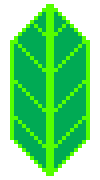Popups#
Simple popups#
You can define your popup at the feature creation, but you can also overwrite them afterwards:
[1]:
import folium
m = folium.Map([45, 0], zoom_start=4)
folium.Marker([45, -30], popup="inline implicit popup").add_to(m)
folium.CircleMarker(
location=[45, -10],
radius=25,
fill=True,
popup=folium.Popup("inline explicit Popup"),
).add_to(m)
ls = folium.PolyLine(
locations=[[43, 7], [43, 13], [47, 13], [47, 7], [43, 7]], color="red"
)
ls.add_child(folium.Popup("outline Popup on Polyline"))
ls.add_to(m)
gj = folium.GeoJson(
data={"type": "Polygon", "coordinates": [[[27, 43], [33, 43], [33, 47], [27, 47]]]}
)
gj.add_child(folium.Popup("outline Popup on GeoJSON"))
gj.add_to(m)
m
[1]:
Make this Notebook Trusted to load map: File -> Trust Notebook
[2]:
m = folium.Map([45, 0], zoom_start=2)
folium.Marker(
location=[45, -10],
popup=folium.Popup("Let's try quotes", parse_html=True, max_width=100),
).add_to(m)
folium.Marker(
location=[45, -30],
popup=folium.Popup(u"Ça c'est chouette", parse_html=True, max_width="100%"),
).add_to(m)
m
[2]:
Make this Notebook Trusted to load map: File -> Trust Notebook
HTML in popup#
[3]:
import branca
m = folium.Map([43, -100], zoom_start=4)
html = """
<h1> This is a big popup</h1><br>
With a few lines of code...
<p>
<code>
from numpy import *<br>
exp(-2*pi)
</code>
</p>
"""
folium.Marker([30, -100], popup=html).add_to(m)
m
[3]:
Make this Notebook Trusted to load map: File -> Trust Notebook
Iframe in popup#
You can also put any HTML code inside a Popup, thaks to the IFrame object.
[4]:
m = folium.Map([43, -100], zoom_start=4)
html = """
<h1> This popup is an Iframe</h1><br>
With a few lines of code...
<p>
<code>
from numpy import *<br>
exp(-2*pi)
</code>
</p>
"""
iframe = branca.element.IFrame(html=html, width=500, height=300)
popup = folium.Popup(iframe, max_width=500)
folium.Marker([30, -100], popup=popup).add_to(m)
m
[4]:
Make this Notebook Trusted to load map: File -> Trust Notebook
[5]:
import pandas as pd
df = pd.DataFrame(
data=[["apple", "oranges"], ["other", "stuff"]], columns=["cats", "dogs"]
)
m = folium.Map([43, -100], zoom_start=4)
html = df.to_html(
classes="table table-striped table-hover table-condensed table-responsive"
)
popup = folium.Popup(html)
folium.Marker([30, -100], popup=popup).add_to(m)
m
[5]:
Make this Notebook Trusted to load map: File -> Trust Notebook
Note that you can put another Figure into an IFrame ; this should let you do strange things…
[6]:
# Let's create a Figure, with a map inside.
f = branca.element.Figure()
folium.Map([-25, 150], zoom_start=3).add_to(f)
# Let's put the figure into an IFrame.
iframe = branca.element.IFrame(width=500, height=300)
f.add_to(iframe)
# Let's put the IFrame in a Popup
popup = folium.Popup(iframe, max_width=2650)
# Let's create another map.
m = folium.Map([43, -100], zoom_start=4)
# Let's put the Popup on a marker, in the second map.
folium.Marker([30, -100], popup=popup).add_to(m)
# We get a map in a Popup. Not really useful, but powerful.
m
[6]:
Make this Notebook Trusted to load map: File -> Trust Notebook
Vega chart in popup#
Vega is a way to describe charts. You can embed a Vega chart in a popup using the Vega class.
[7]:
import json
import numpy as np
import vincent
multi_iter2 = {
"x": np.random.uniform(size=(100,)),
"y": np.random.uniform(size=(100,)),
}
scatter = vincent.Scatter(multi_iter2, iter_idx="x", height=100, width=200)
data = json.loads(scatter.to_json())
m = folium.Map([0, 0], zoom_start=1)
marker = folium.Marker([0, 0]).add_to(m)
popup = folium.Popup("Hello").add_to(marker)
folium.Vega(data, width="100%", height="100%").add_to(popup)
m
/home/runner/micromamba/envs/TEST/lib/python3.12/site-packages/vincent/core.py:10: UserWarning: pkg_resources is deprecated as an API. See https://setuptools.pypa.io/en/latest/pkg_resources.html. The pkg_resources package is slated for removal as early as 2025-11-30. Refrain from using this package or pin to Setuptools<81.
from pkg_resources import resource_string
[7]:
Make this Notebook Trusted to load map: File -> Trust Notebook
Vega-Lite chart in popup#
Vega-lite is a higher-level version of Vega. Folium supports it as well in the VegaLite class.
[8]:
from altair import Chart
import vega_datasets
# load built-in dataset as a pandas DataFrame
cars = vega_datasets.data.cars()
scatter = (
Chart(cars)
.mark_circle()
.encode(
x="Horsepower",
y="Miles_per_Gallon",
color="Origin",
)
)
vega_lite = folium.VegaLite(
scatter,
width="100%",
height="100%",
)
m = folium.Map(location=[-27.5717, -48.6256])
marker = folium.Marker([-27.57, -48.62])
popup = folium.Popup()
vega_lite.add_to(popup)
popup.add_to(marker)
marker.add_to(m)
m
[8]:
Make this Notebook Trusted to load map: File -> Trust Notebook
Lazy loading#
If whatever you are showing in the popup is slow or heavy to load and you have many popups, you may not want to render the popup contents immediately. There’s an argument to prevent loading until the popup is opened.
[9]:
m = folium.Map([43, -100], zoom_start=4)
html = "{a resource that is heavy to load, such as an image}"
folium.Marker([30, -100], popup=html, lazy=True).add_to(m)
m
[9]:
Make this Notebook Trusted to load map: File -> Trust Notebook
